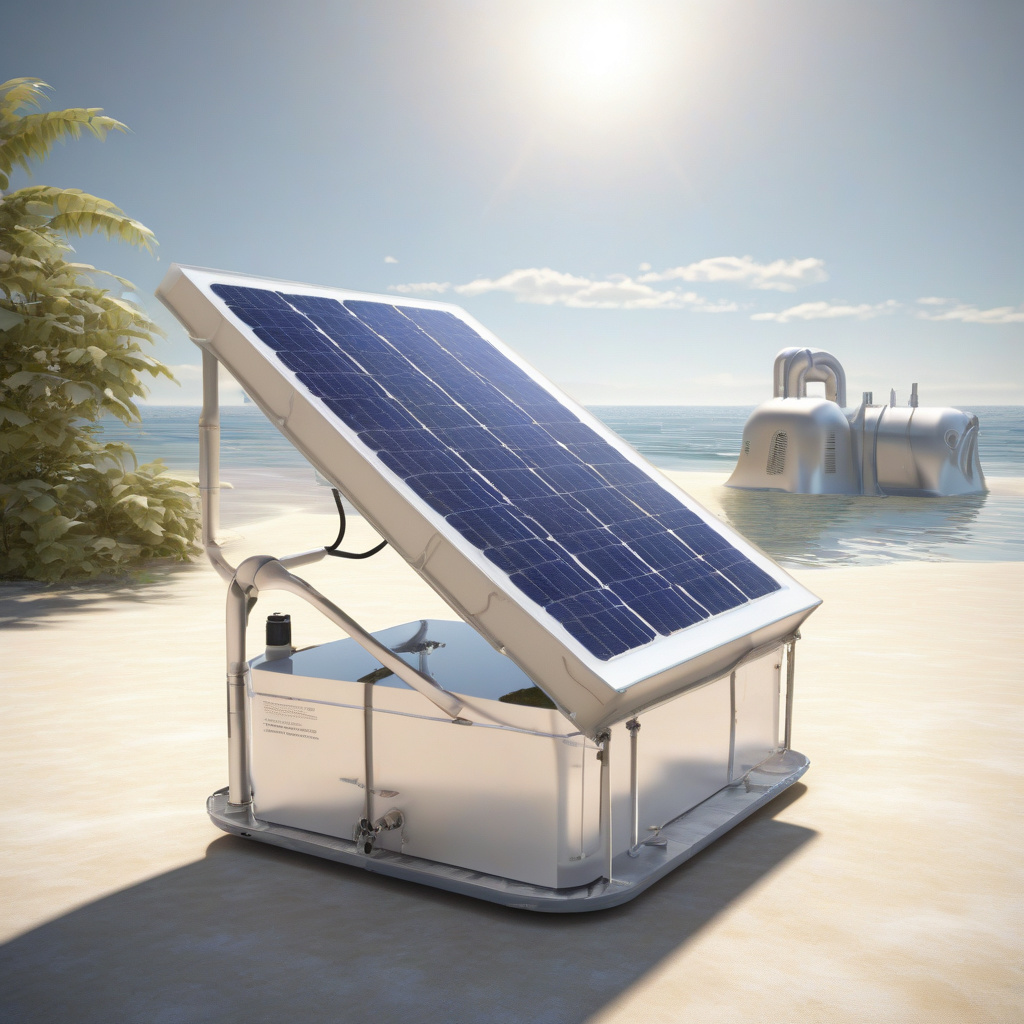New Solar Desalination Device: Turning Seawater into Fresh Drinking Water
Researchers have developed a new technology that harnesses sunlight to evaporate seawater and generate clean, fresh drinking water. This innovative solar desalination device is capable of producing an impressive 3.4 liters of potable water per hour, offering a sustainable solution to the pressing global water scarcity issue.
Traditional desalination processes are often energy-intensive and expensive, relying on fossil fuels and contributing to environmental pollution. In contrast, this new solar-powered device operates using renewable energy from the sun, making it both cost-effective and eco-friendly. By utilizing sunlight to evaporate seawater, the device effectively separates salt and other impurities, producing clean water that is safe for consumption.
One of the key advantages of this solar desalination device is its scalability. Whether used on an individual household level or in larger community settings, the technology can be easily adapted to meet varying water demands. This flexibility makes it a versatile solution for regions facing water shortages, where access to clean drinking water is a critical challenge.
Furthermore, the simplicity of the device’s design enhances its practicality and accessibility. With minimal moving parts and low maintenance requirements, it offers a user-friendly solution that can be deployed in remote areas with limited resources. This ease of use is essential for ensuring that communities in need can benefit from the technology without facing significant barriers.
The environmental benefits of the solar desalination device are also worth noting. By harnessing solar power, the technology reduces reliance on non-renewable energy sources, lowering carbon emissions and minimizing ecological impact. This aligns with global efforts to transition towards sustainable practices and combat climate change, highlighting the device’s role in promoting environmental stewardship.
In addition to its sustainability and efficiency, the solar desalination device has the potential to improve public health outcomes in water-stressed regions. By providing a source of clean drinking water, it helps mitigate the spread of waterborne diseases and enhances overall community well-being. This direct impact on public health underscores the device’s significance in addressing humanitarian needs and promoting social development.
As the global population continues to grow, the demand for clean water will only increase, making innovative solutions like the solar desalination device essential for ensuring water security. By harnessing the power of the sun to produce fresh drinking water, researchers have opened up new possibilities for sustainable water management and resource conservation. This technology serves as a beacon of hope in the face of water scarcity, offering a glimpse into a more sustainable future where access to clean water is a reality for all.
In conclusion, the development of the new solar desalination device marks a significant milestone in the quest for sustainable water solutions. With its ability to generate 3.4 liters of fresh drinking water per hour using sunlight, the technology presents a promising opportunity to address water scarcity challenges on a global scale. By combining innovation, sustainability, and social impact, this solar-powered device exemplifies the potential for technology to drive positive change and create a more resilient future for generations to come.
solar desalination, clean water, sustainability, innovation, water scarcity











